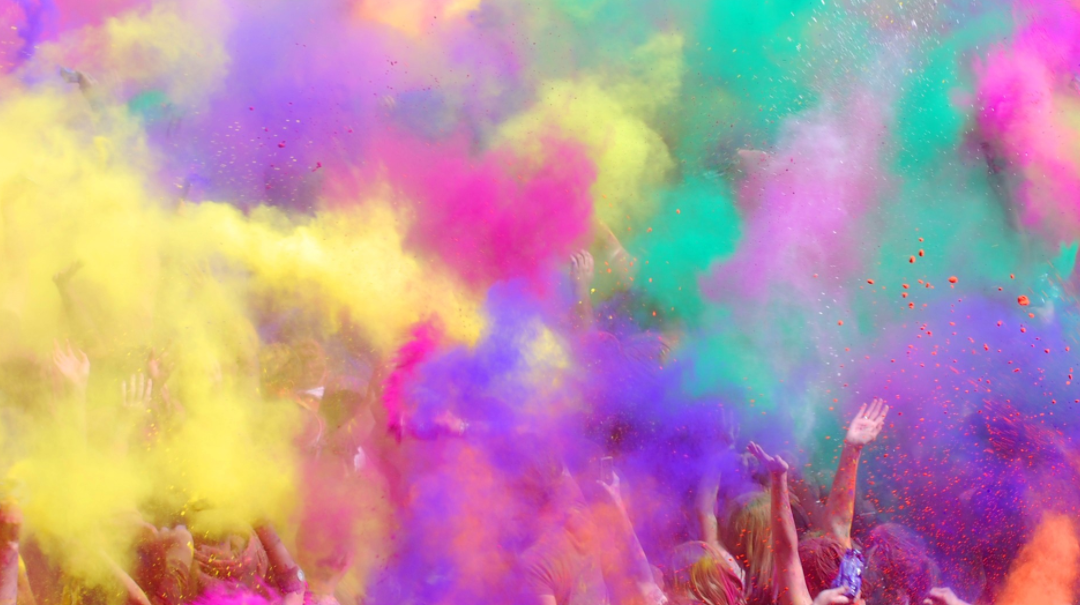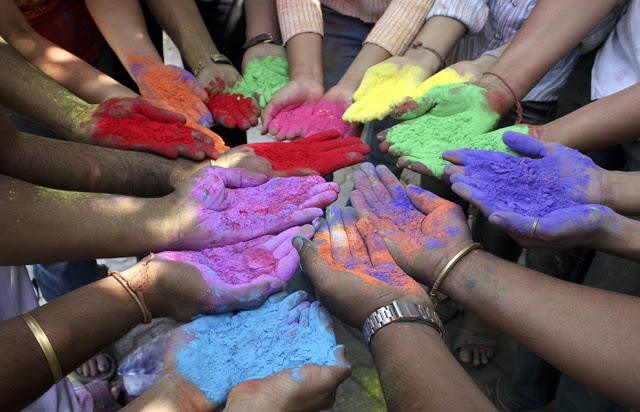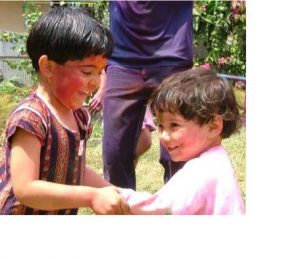Between the end of February and middle of March, Hindus in India and Nepal celebrated the “Holi” festival which is also known as the “festival of colors” or the “festival of love.” An ancient festival, Holi has come to signify many things – the victory of good over evil, the end of winter and arrival of spring, an opportunity to repair broken relationships and a time to play, laugh, forgive and forget, as well as thanksgiving for a good harvest. With so many meanings it is no wonder that Holi has become popular with non- Hindus and has spread to many parts of South Asia as well as to Europe and North America.
This year the town of Swindon, England celebrated with gusto. 600-700 persons gathered at the Swindon Hindu Temple and Cultural Centre where they transformed the site into a sea of color by hurling powdered paint at each other. Representing the colors of spring, the paint celebrates the new season and invites everyone, rich and poor, old and young, men and women, to laugh and share in the festivities.
According the Hindu text the Bagavata Purana, Holi is celebrated in honor of Vishnu and his follower Prahlada. According to legend, King Hiranyakashipu “was the king of the demonic Asuras and had earned a boon that gave him five special powers: he could be killed by neither a human being nor an animal, neither indoors nor outdoors, neither at day nor at night, neither by astra (projectile weapons) nor by any shastra (handheld weapons), and neither on land nor in water or air. Hiranyakashipu grew arrogant, thought he was God, and demanded that everyone worship only him.
Hiranyakashipu’s own son, Prahlada, however, disagreed. He was and remained devoted to Vishnu. This infuriated Hiranyakashipu. He subjected Prahlada to cruel punishments, none of which affected the boy or his resolve to do what he thought was right.
Finally, Holika, Prahlada’s evil aunt, tricked him into sitting on a pyre with her. Holika was wearing a cloak that made her immune to injury from fire, while Prahlada was not. As the fire roared, the cloak flew from Holika and encased Prahlada, who survived while Holika burned. Vishnu, the god who appears as an avatar to restore Dharma in Hindu beliefs, took the form of Narasimha – half human and half lion, at dusk (when it was neither day nor night), took Hiranyakashyapu at a doorstep (which was neither indoors nor outdoors), placed him on his lap (which was neither land, water nor air), and then eviscerated and killed the king with his lion claws (which were neither a handheld weapon nor a launched weapon).
The Holika bonfire and Holi festival signifies the celebration of the symbolic victory of good over evil, of Prahlada over Hiranyakashipu, and of the fire that burned Holika.”(1)
Holi is also associated with a legend of Krishna and in commemoration of the divine love of Radha for her Lord. According to this legend, Krishna developed his dark blue skin color as a baby because the “she demon Putana poisoned him with her breast milk. In his youth, Krishna despaired whether the fair-skinned Radha and other girls would like him because of his skin color. His mother, tired of the desperation, asks him to approach Radha and color her face in any color he wanted. This he does, and Radha and Krishna became a couple. Ever since, the playful colouring of Radha’s face has been commemorated as Holi.” (2)
Culturally, the Holi festival is a day to be rid of one’s past errors and forgive others of theirs. It is a time to have a fresh start in one’s life, make new friends and enjoy the resurgence of spring. Pradeep Bhardwaj, chairman of the Swindon Hindu Temple, summed up this joyous festival. “It brings people together in a spirit of tolerance and equality – everyone has a good time, especially the children, and it’s wonderful to see so many people here.” (3)
(1)Wikipedia, Holi Festival
(2) Ibid.
(3) Swindon Advertiser



